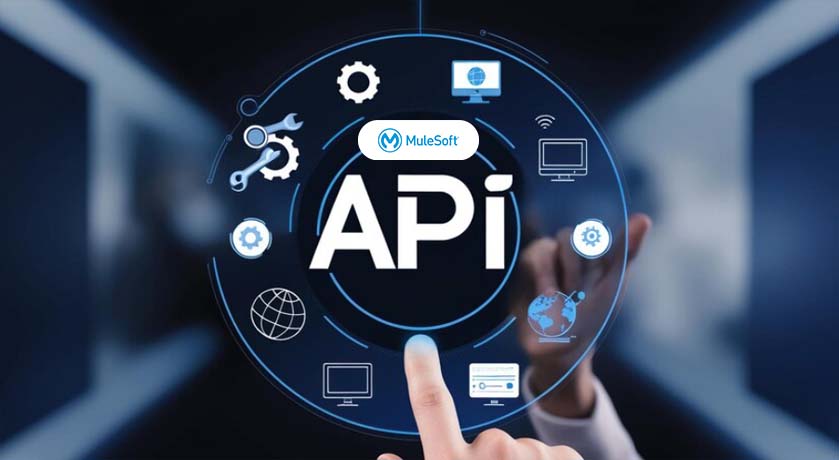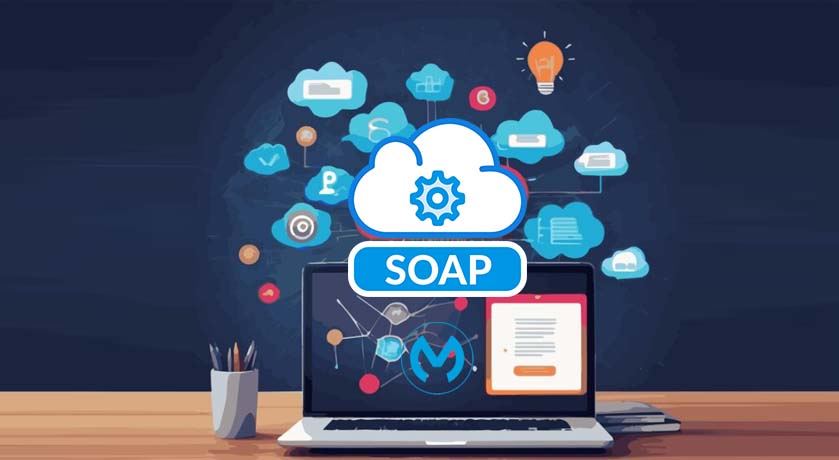ntroduction:
Step into the dynamic universe of digital integration, where API-led connectivity stands as a powerful force reshaping how organizations weave together their systems, applications, and data. In this blog post, we’re set to demystify the intricacies of API-led connectivity in Mule 4. We’ll unpack the core concepts, navigate through its layers, and uncover the compelling reasons that make it a pivotal player in contemporary integration strategies. Join us on this exploration into the essence of modern integration.
What is API-led Connectivity?
API-led connectivity is a strategic approach to integration that revolves around the creation and management of APIs. In Mule 4, it is brought to life through the Anypoint Platform, offering a comprehensive set of tools to design, deploy, and govern APIs. At its core, API-led connectivity is designed to bring order to the complexity of digital ecosystems, fostering agility, reusability, and scalability.
API-led Connectivity:
At its essence, API-led connectivity comprises three interconnected layers,
- System layer
- Process layer
- Experience layer
Structure of API led connectivity:

System/API Layer:
System Layer in API-led connectivity is the foundational layer responsible for exposing existing systems, databases, or applications as reusable APIs. Here are the key points regarding the System Layer:
- Foundational Building Blocks:
The System Layer serves as the bedrock for integration, exposing existing systems and resources as APIs. - API Creation:
APIs are crafted to encapsulate the functionalities of specific systems, databases, or applications. - Modularity and Reusability:
APIs created in the System Layer act as modular and reusable building blocks for higher-level integrations. - Standardized Interfaces:
APIs provide standardized interfaces, allowing seamless communication with underlying systems. - Backend Connectivity:
This layer is focused on connecting to backend systems, making their functionalities accessible through APIs. - Encapsulation of Functionality:
The System Layer involves encapsulating the functionality of diverse systems into APIs, promoting abstraction and simplification.
2. Process Layer:
Process Layer is a crucial component of API-led connectivity, responsible for orchestrating and combining APIs from the System Layer to create cohesive business processes. Here are the key points regarding the Process Layer:
- Orchestration of APIs:
The Process Layer orchestrates the flow of data and services by combining and coordinating APIs exposed in the System Layer. - Workflow Management:
It manages the flow of information between different systems, ensuring that data moves seamlessly through the integration process. - Business Logic Implementation:
The Process Layer accommodates the implementation of business logic and rules, allowing for the transformation and manipulation of data as it flows through the integration. - Integration Middleware:
This layer often involves the use of integration middleware to facilitate communication between different APIs and systems. - Error Handling:
It includes mechanisms for handling errors and exceptions, ensuring robustness in the integration process. - Service Orchestration:
APIs exposed in the System Layer are orchestrated to create comprehensive services that fulfill specific business requirements. - Data Transformation:
Data transformation tasks may be implemented in this layer to convert and adapt data between different formats as required by the business processes.
3. Experience Layer:
Experience Layer represents the user-facing dimension of API-led connectivity, focusing on crafting APIs tailored for specific user experiences. Here are the key points regarding the Experience Layer:
- User-Facing APIs:
The Experience Layer houses APIs specifically designed to cater to user interactions, whether in mobile applications, web interfaces, or other consumer-facing scenarios. - User-Centric Approach:
It ensures a user-centric approach to integration, aligning the digital ecosystem with the expectations and preferences of end-users. - Enhanced User Satisfaction:
APIs in the Experience Layer are crafted with the end-user in mind, aiming to enhance user satisfaction and deliver an intuitive and engaging experience. - Consumer-Facing Interfaces:
These APIs serve as the bridge between the backend systems and the user, facilitating smooth interactions with the integrated functionalities. - Tailored User Interfaces:
APIs in this layer are often utilized to build tailored user interfaces, providing a seamless and customized experience based on the specific needs of the audience. - Multi-Channel Support:
The Experience Layer may involve APIs that support various channels, such as web, mobile, or other platforms, ensuring a consistent user experience across different touchpoints. - User Interface (UI)/User Experience (UX) Integration:
It involves integrating APIs with user interface and user experience components to create a cohesive and visually appealing interaction for end-users.
Advantages of API-led Connectivity:
- Reusability: Reusable APIs minimize development time and effort.
- Agility: Agile development and quicker adaptation to market changes.
- Scalability: Scalable architecture accommodates growth seamlessly.
- Reduced Complexity: Modular design reduces the complexity of integrations.
- Centralized Management: Centralized API management streamlines governance and monitoring.
Why Choose API-led Connectivity?
Opting for API-led connectivity in Mule 4 is like choosing a smart, flexible, and user-friendly way to make different parts of your digital world work seamlessly together. It’s efficient and modular, allowing you to reuse and adapt functionalities without making everything overly complicated. With a central hub like Anypoint Platform’s API Manager, you can easily design, monitor, and manage your APIs in one place. This approach not only satisfies your current integration needs but also grows with your business, making it adaptable to changes and future technologies. Plus, it’s all about creating a smoother experience for end-users, reducing complexity, and ensuring your systems work in harmony.
Conclusion:
In simple terms, API-led connectivity in Mule 4 is not just a set of rules; it’s a clever way of making technology work well together in the digital era. It’s like having a strategy that uses small, reusable building blocks and keeps the user at the center. By following this approach, organizations can smoothly handle the challenges of modern integration, moving quickly and efficiently. Think of it as a guiding light in the fast-changing digital world, showing the way for organizations to create solutions that are smooth, adaptable, and user-friendly.









